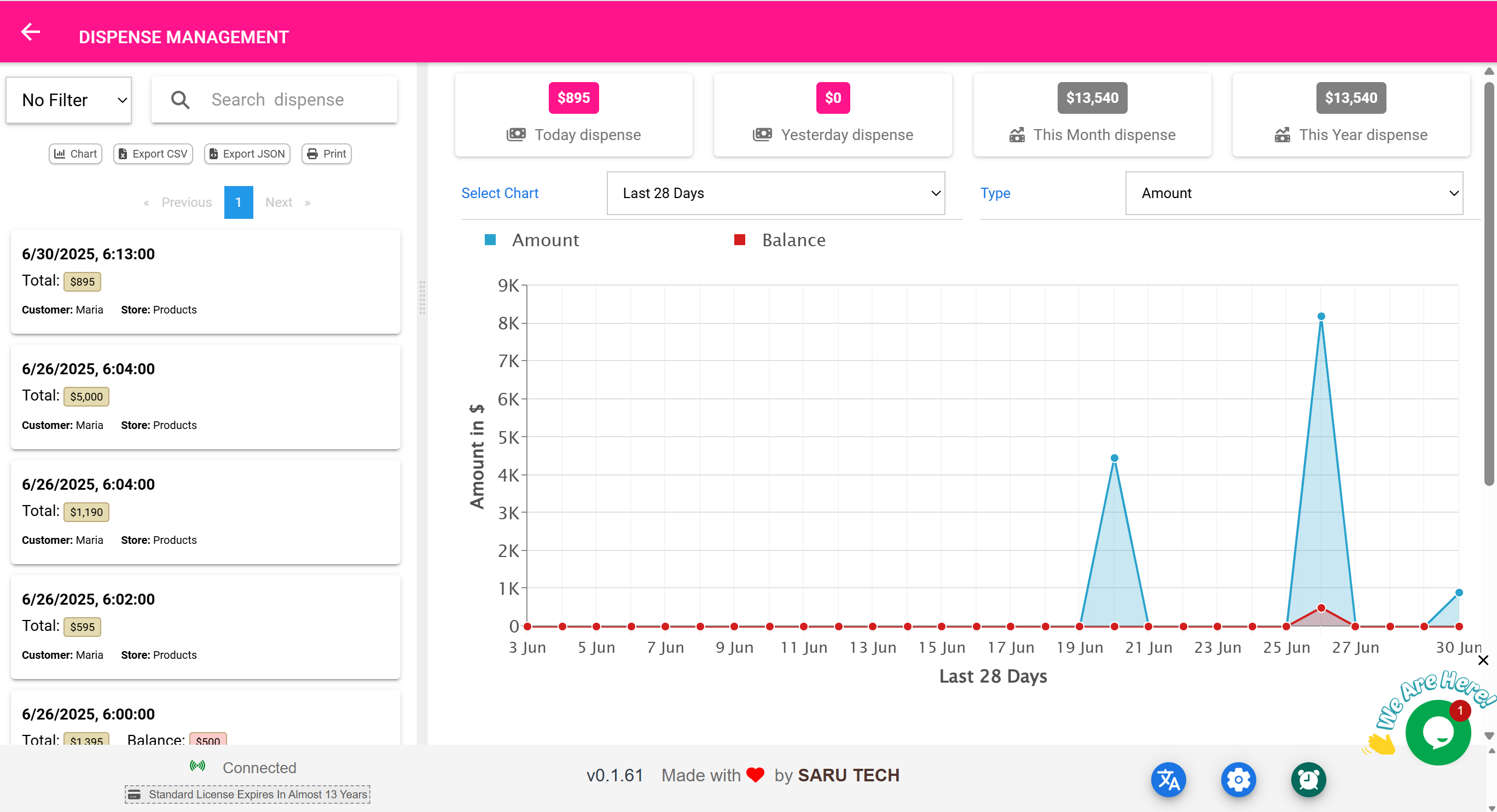💊 Dispense Management Page
“Track all items that have been permanently dispensed — including balances, returns, and service-related stock movement.”
⚠️ Reminder:
This is a management and review page only. All actual dispensing is done via the Inventory Page using the Dispense button.
This page allows you to:
- View and search all dispensing records
- Track patient or customer balances
- Process returns from previously dispensed items
- Reprint, email, or export dispensing records
- Investigate item-level return history via the embedded bill component
📦 What Is a “Dispense”?
Dispensing refers to final and permanent movement of stock to a person — usually:
- Medication given to a patient (e.g., after a consultation)
- Equipment issued for take-home care
- Clinical items billed directly to a patient or department
✅ These are not expected to be returned, unlike borrowing.
📊 Summary Inventory Panel (Dispense Mode)
When no dispense record is open, a live summary panel appears — tailored to the dispense mode.
| Metric | What It Shows |
|---|---|
| Dispense Records | Total number of dispense transactions |
| Total Amount Dispensed | Value of dispensed stock (based on selling price) |
| Total Paid | Cash/card amount collected at point of dispense |
| Outstanding Balances | Amount still owed (e.g., unpaid by patient or pending insurance) |
🔍 Filters and Search Options
The filter dropdown lets you tailor the view to your needs. Options include:
- Item Filter (Default): Focus on dispensing records for a specific product. Selecting this activates an autocomplete search box. The list and summary panel update to show dispense activity for that product only.
- Customer Filter: Filter records by patient or department. Useful for tracking patient-level dispense histories and balances.
- Status Filter: Show only Completed, Returned, or Refunded transactions.
- Date Filter: Narrow results to Today, This Week, Last Month, or a custom range.
✅ The summary panel recalculates dynamically with your selected filters.
🧰 Example Workflow: Morning Dispense Review
- Each morning, a pharmacist checks what was dispensed yesterday and who has not completed payment.
- Open Dispense Management Page
- Set filter: “Yesterday”
- Review:
- Dispensed: 12 records
- Paid: $1,850
- Balance: $350 (3 patients)
- Export the list and share with billing for follow-up
🔁 Embedded Bill Features for Dispense
The embedded page-bill component allows you to perform several advanced tasks even after a dispense has been completed.
🔙 1. Returning a Dispensed Item
While dispense is typically final, the system supports post-dispense returns for:
- Medication errors
- Recalled items
- Canceled discharges
- Early equipment return
🧰 Example:
- A nurse dispensed the wrong medication. You need to reverse it.
- Search the patient name or scan their receipt barcode
- Open the dispense record
- Click Return next to the incorrect item
- Enter quantity (e.g., 1 of 2 packs returned)
- System adds it back to inventory
- Timeline is updated; return is shown in Refunds
📦 2. Return Tracking
- Every return is logged
- Includes the quantity, return date, and the staff member
- Appears in the Refunds and Timeline section of the bill
- Used for quality assurance or financial audit
📷 3. Scan-to-Recover
If you have a printed receipt with barcode or QR code:
- Scan it directly
- The dispense record is immediately pulled up
- You can review or return from there
✅ Great for pharmacies, labs, or wards handling large daily volume.
🧾 4. Print Updated Receipt or Return Slip
After processing a return:
- You can print a new receipt reflecting the adjusted total
- This helps avoid confusion with outdated paper receipts
💬 5. Use Comments for Clarity
Staff can add internal comments like:
- “Returned due to allergy”
- “Dispensed by Nurse Joy”
- “Refund pending family approval”
✅ All comments are timestamped and attached to the bill.
🧠 Best Practices
- Use the return button only — don’t manually edit stock quantities
- Use barcode receipts to make returns quicker and avoid errors
- Run a weekly unpaid filter to follow up on balances
- Encourage your team to add notes for traceability

